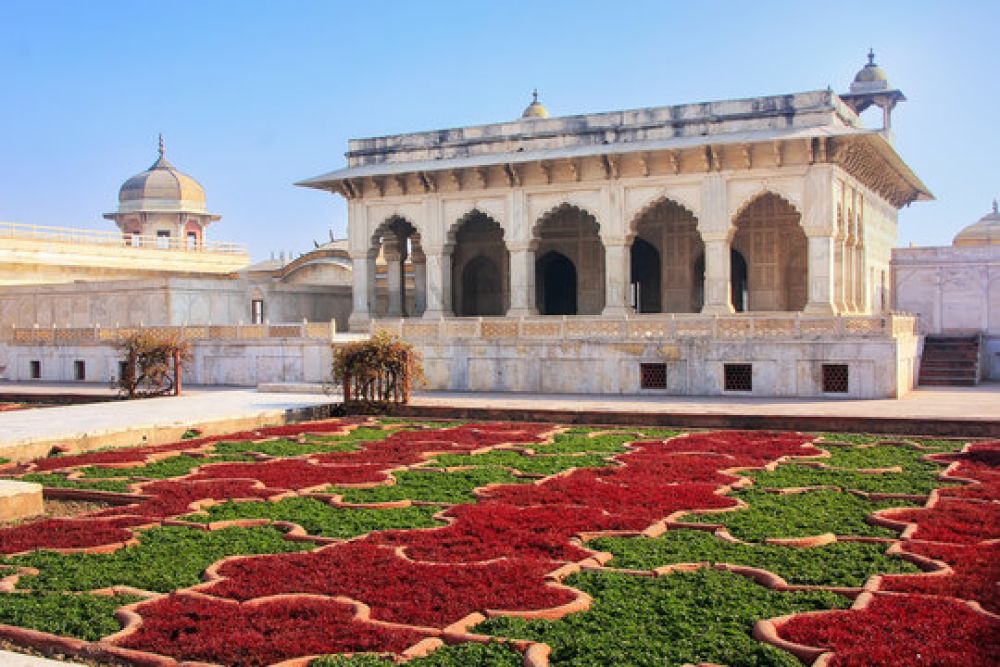

The Anguri Bagh or the 'Garden of Grapes' sits at the heart of Agra's rich historical tapestry. It was established in 1637 by the Mughal Emperor Shah Jahan as part of the grand residential complex known as the Khas Mahal, within the Agra Fort. This Mughal garden is a testament to the era's splendid architecture and love for harmonious design.
Anguri Bagh is known for its symmetrical beauty and was initially created for the private use of the emperor and his entourage. It was laid out in the classical Charbagh structure, which is a quadrilateral garden layout based on the four gardens of Paradise mentioned in the Quran. Each section of the garden would have been adorned with vibrant flowers, lush plants, and grapevines - giving rise to its name.
The history of tourism in Agra is closely tied to the prominent Mughal-era monuments, including the Taj Mahal, Agra Fort, and Fatehpur Sikri. As global interest in these sites grew over the centuries, so too did the allure of Anguri Bagh. Visitors from across the world started to include the garden in their itineraries to appreciate the ancient Mughal horticulture and the serenity it provided within the confines of the bustling Agra Fort.
Throughout the years, Anguri Bagh has undergone several restoration attempts to maintain its original grandeur. The Archaeological Survey of India has played a pivotal role in these restoration and conservation efforts, ensuring the garden's survival for future generations to appreciate.
Education and Cultural Exploration: Modern tourists are increasingly interested in the historical and cultural context of destinations like Anguri Bagh. They seek immersive experiences that provide a deeper understanding of the site's significance during the Mughal era.
Sustainable Tourism: There is a growing trend to travel responsibly and sustainably. Visitors to Anguri Bagh are often made aware of the importance of preserving the site's integrity and the overall heritage of Agra.
Photography: In the age of social media, Anguri Bagh, with its geometric perfection and connection to the aesthetically rich Mughal past, is a popular spot for photography enthusiasts.
Looking ahead, it is likely that Anguri Bagh will continue to attract those who have an appreciation for history, architecture, and garden design. Efforts by the tourism industry to promote Anguri Bagh alongside Agra's other historical attractions are expected to keep this gem a significant point of interest for both domestic and international travelers.
With an ongoing commitment to conservation and the increasing desire for authentic cultural experiences, the future of tourism at Anguri Bagh, Agra, appears to be one that will preserve and celebrate its historical significance for many years to come.